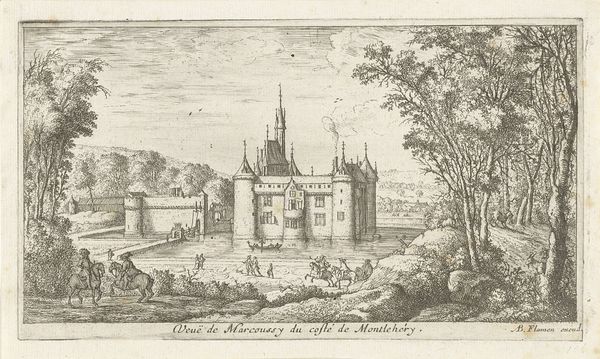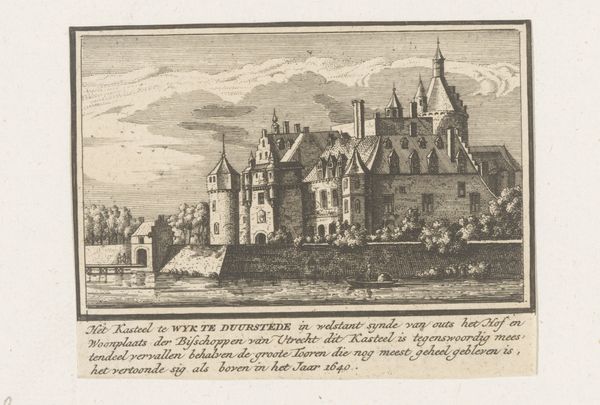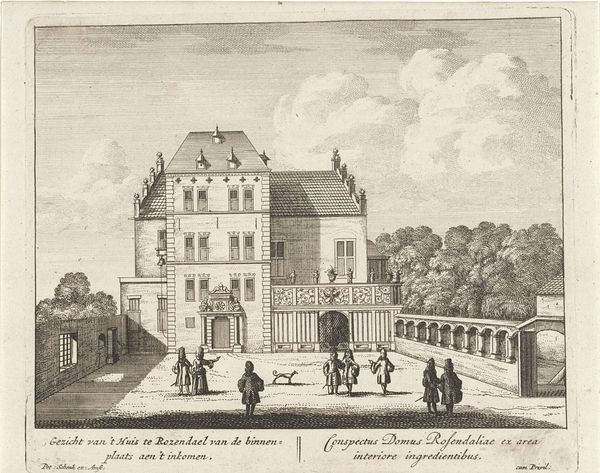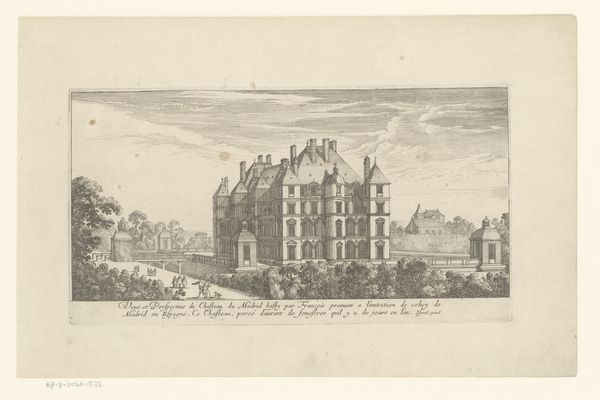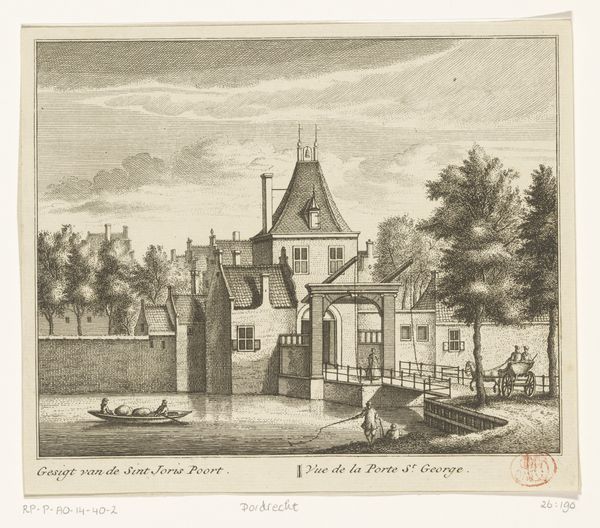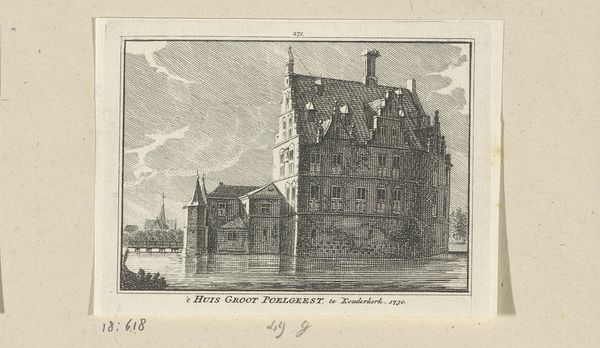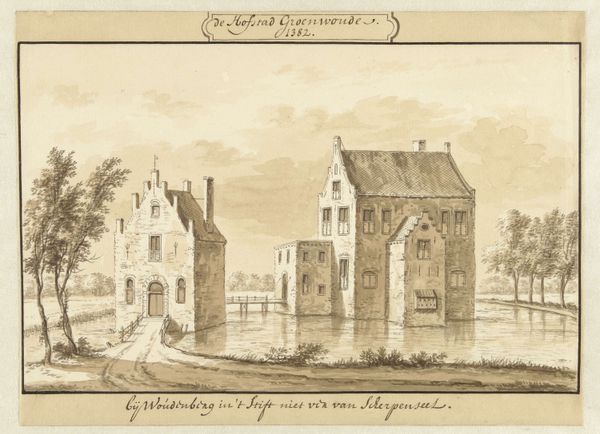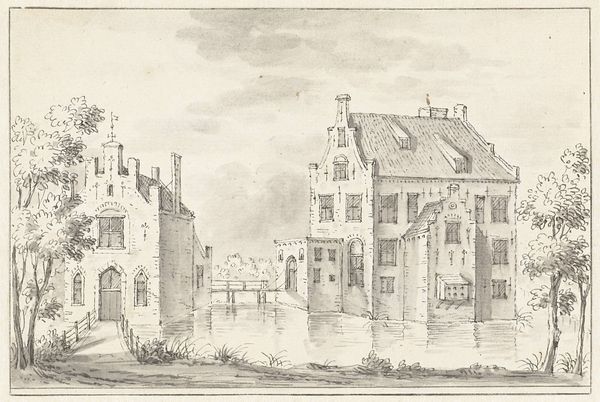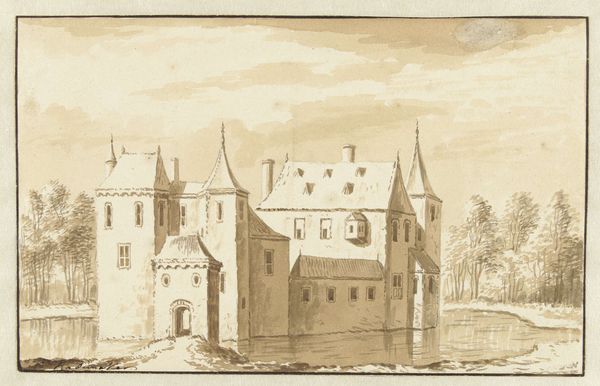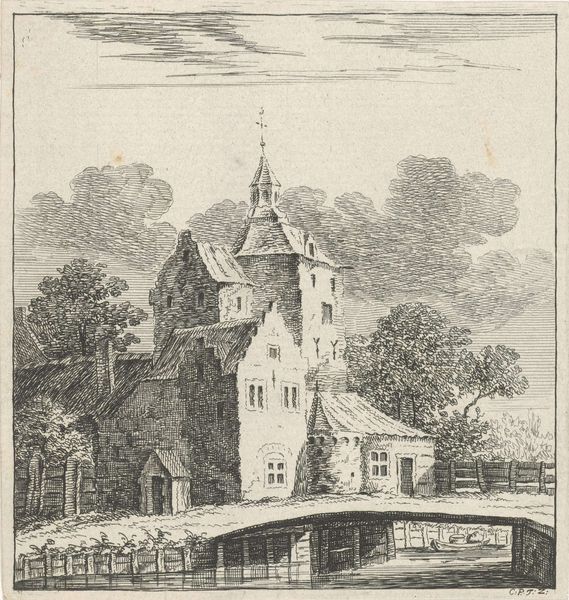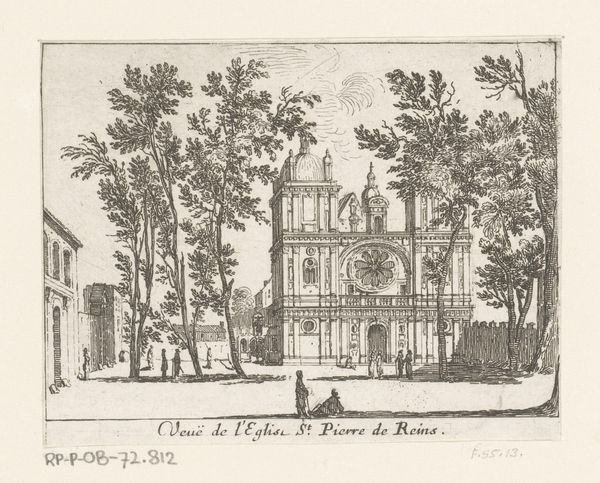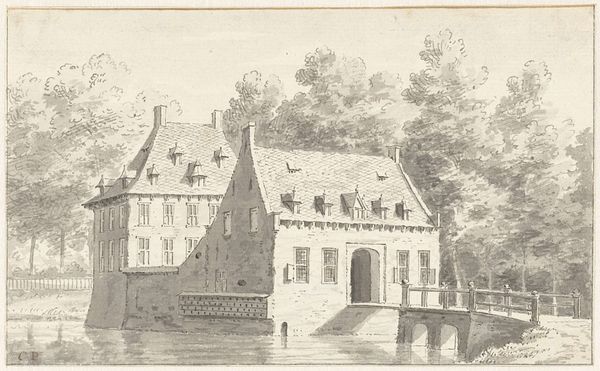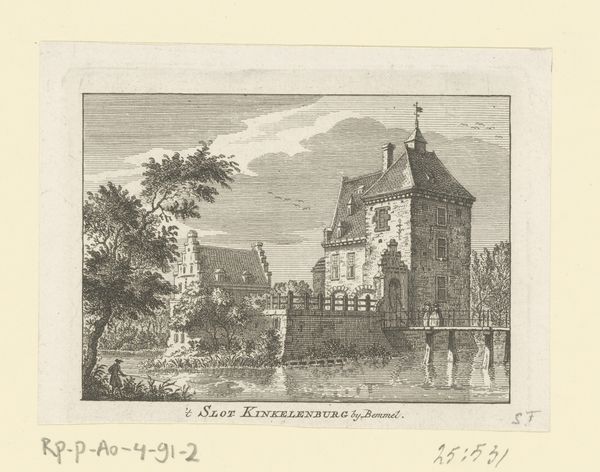
print, engraving
#
baroque
# print
#
old engraving style
#
landscape
#
cityscape
#
engraving
Dimensions: height 155 mm, width 215 mm
Copyright: Rijks Museum: Open Domain
Editor: This engraving, "Gezicht op kasteel Doornenburg," created by Hendrik Spilman in 1738, depicts a Dutch castle in considerable detail. The technique and composition feel very formal. What’s your take on it? Curator: Well, as a materialist, I immediately think about the production of this image. Consider the labour involved in creating such a detailed engraving. The artist relies on skilled craftsmanship. Can we view it in the social and economic context of its creation? Editor: What do you mean? Curator: The Baroque period saw increased urbanization and the rise of a merchant class. How did that dynamic play into what Spilman was producing and for whom? The accessibility of prints allowed for broader dissemination of imagery. How did this affect artistic production? Did prints like these simply celebrate wealth and power? Or did they also provide documentation that changed how people understood the world around them? Editor: So, beyond just admiring the final product, we should think about the engraver’s process and its societal function at the time? Curator: Precisely! And to question the idea that an engraving, just because it is “craft”, is inherently less important than a painting, perhaps. Were the materials accessible? Were there workshops creating similar images for different purposes? Editor: That gives me a whole new perspective on engravings. I've been focused on what they depict rather than how they were made and consumed. Curator: Indeed, it makes one re-evaluate the distinction between "high art" and what we consider "mere" craft.
Comments
No comments
Be the first to comment and join the conversation on the ultimate creative platform.
